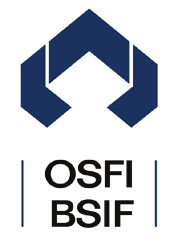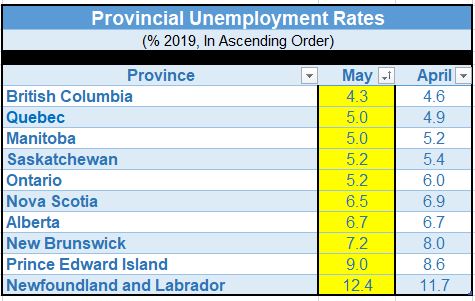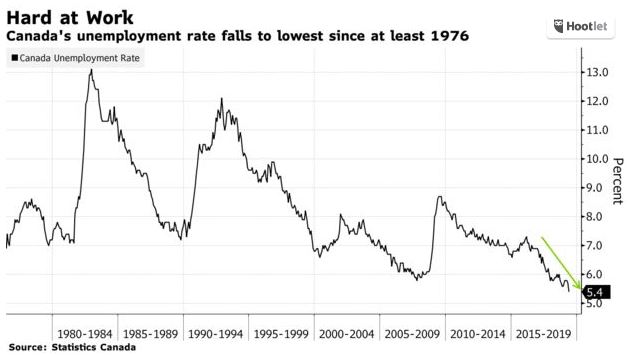Siddall Launches Latest Volley in War of Words with the Mortgage Industry
For anyone who has been following the saga, it should be plainly obvious where Evan Siddall, head of the CMHC, stands on the mortgage stress test.
In a recent editorial, we took an in-depth look at Siddall’s at-times passionate defence of stricter mortgage qualification rules. Part of that included public comments in which he accused Mortgage Professionals Canada President and CEO Paul Taylor of “bold” self-interested rhetoric and “reckless myopia” for the association’s calls for tweaks to the stress test.
In an interview with the Globe and Mail on Monday, Siddall doubled down on his hardline stance against those in the mortgage and real estate industries who are calling for changes to the new regulations.
“The real estate lobby is on the wrong side of this issue, they’re being intensely self-interested, and somebody had to call them on it frankly because they were getting traction,” Siddall told The Globe and Mail, adding that he has received strong support from other policy-makers, economists and the public at large through his Twitter feed.
Siddall reiterated his conviction that loosening the requirements of the stress test or extending amortizations would result in increased debt levels and higher home prices.
Only a “calamity” in the housing market would warrant revisiting the stress test, he said, adding that the declines in home sales and prices since the stress test was introduced have been welcome.
In response to the comments, Mortgage Professionals Canada’s Paul Taylor told CMT, “I’m increasingly disappointed with the language choices of Mr. Siddall; the continued public mischaracterization of our positions, and more recently, his attacks on our industry’s character rather than our policy positions. The partisan political posturing is damaging the industry’s and government’s ability to engage in healthy conversations about the significant social impacts the fiscal policies are having across Canada.”
Taylor added that the association’s positions are formed with careful consideration of economic data, and that a “growing chorus” of economists are now asking whether the stress test may be too high, particularly given falling rates and the fact the benchmark rate remains unchanged.
Stress Test Formula Challenged
 Siddall also participated in a panel discussion hosted by the Global Risk Institute this week where he was challenged on the formula behind the stress test by CIBC World Markets Deputy Chief Economist Benjamin Tal, who argued the formula should be more flexible to allow for adjustment when rates rise and fall.
Siddall also participated in a panel discussion hosted by the Global Risk Institute this week where he was challenged on the formula behind the stress test by CIBC World Markets Deputy Chief Economist Benjamin Tal, who argued the formula should be more flexible to allow for adjustment when rates rise and fall.
“Maybe we have to inject a little bit more science into this,” he said, adding, “I really don’t know where it came from, and I think that if there is research around it, we need to see it.”
To which Siddall replied: “When you’re trying to convince a Minister to make a decision, you ought to make it simple and communicable and you don’t want to have to go back and have the conversation too many times,” Siddall replied, as reported by the Globe and Mail.
“The cost of simplicity here is too high,” Tal retorted, adding that “millions and millions” of Canadians are being impacted.
“Mr. Tal is 100% accurate when he suggests maintaining a poor solution because it is simple to explain is very bad policy,” Taylor said. “Given the magnitude of the economic impact the stress test can have, it is only logical to allow for continued discussion regarding the level at which it is set, and the manner in which it is derived.”
Siddall on 30-yr Amortizations: “I Think it’s Dumb”
Siddall was reportedly asked by an audience member for his thoughts on extending amortizations back up to 30 years, or potentially even 50 years.
“If you extend amortization, you’re increasing demand and increasing debt. So, you know my answer: I think it’s dumb,” he replied, before adding, “Fifty years is dumber than 30.”
More Details on the First-Time Home Buyers Incentive
Details on the CMHC’s First-Time Home Buyers Incentive have been slow coming out since the down payment assistance program was first announced as part of the Liberal government’s 2019 budget. Subsequent details have trickled out over the following months (here and here), with a few additional points being confirmed this week.
The $1.25 billion program is still on track to begin in September and will provide 5% of a first-time buyer’s down payment for the purchase of existing homes, or 10% for the purchase of a new build.
Siddall said homeowners would have to repay the government for its current market value share of the property after a maximum of 25 years if the house hasn’t been sold. He added homeowners would have the option to buy out the government’s share at any point before.
OSFI Says Stress Test is “Working”
 Meanwhile, the Office of the Superintendent of Financial Institutions (OSFI), which was responsible for introducing the mortgage stress test, said this week that the new rules are “working.”
Meanwhile, the Office of the Superintendent of Financial Institutions (OSFI), which was responsible for introducing the mortgage stress test, said this week that the new rules are “working.”
“The revisions to B-20 are working; strengthening mortgage underwriting across Canada and improving the resilience of the Canadian financial system to future shocks,” reads an information sheet released by OSFI.
“Since the B-20 revisions were put in place, lenders are approving fewer mortgages for the most highly indebted or over-leveraged borrowers,” OSFI added, saying new uninsured loans at 450% of a borrower’s income have levelled off at 14%, down from a peak of 20%.
In response to criticism that the stress test reduces options and hinders competition for renewals, since it applies to existing borrowers wanting to switch lenders, OSFI noted the difference between renewal and new mortgage rates for uninsured five-year fixed and variable rate mortgages has remained “largely unchanged” since the new rules were introduced.
“If a borrower decides to change lenders, the new lender must act responsibly by following their own established underwriting standards,” OSFI commented. “Business models and risk tolerances are different across lenders; it is not responsible for lenders to rely on the past underwriting standards of another lender.”
-STEVE HUEBL










